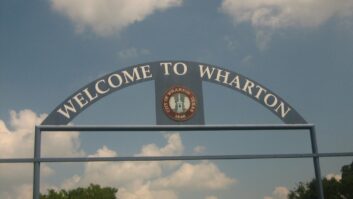The Federal Communications Commission upheld a penalty of $18,400 against Real Life Broadcasting, licensee of WIFI(AM), Florence, N.J., for operating with excessive power and failing to maintain its EAS system, a fence at the tower base or issues/program lists in its public inspection file. After Real Life asked for the original $23,000 fine to be reduced or eliminated, the agency cut the fine due to the broadcaster’s past good compliance.
In 2007 and 2008, the commission’s Philadelphia office received complaints alleging that WIFI was operating with excessive power. During an inspection in 2007, WIFI operated at 998.6 watts, when it was temporarily authorized to operate at 125 watts.
Real Life was unable to provide any EAS logs and its EAS equipment could not receive any EAS activations, said the agency in its decision. During the April 2007 inspection, agents told WIFI’s chief operator about the condition of the EAS equipment and warned him that it was not operational. The problems remained at another inspection two days later that April, noted the commission.
The FCC said that during its inspection field agents saw no fence surrounding the four-tower array and that gates to three of the four towers were left open and the gate to the fourth tower was closed but not locked. During the second inspection the gates for the first three towers were closed and locked but the gate for the fourth tower was still not locked. The contract engineer later told field agents it was open because of a lost key; he replaced the lock and subsequently locked the gate.
The contract engineer also reported to the agents that the circuit to change the transmitter from daytime to nighttime mode had not been working for more than a year. The caretaker at the property was responsible for switching the transmitter to nighttime mode and the contract engineer said that sometimes the caretaker forgot to reduce power.
In August 2007 Real Life told the FCC it bought a remote monitoring unit that can automatically adjust the station’s power to the authorized daytime and nighttime modes. Real Life also acknowledged that its EAS equipment was affected by lightning and after the inspection, personnel checked and reset the equipment.
The company also said it was now keeping its issues/programs lists in the station’s public inspection file, located in the main studio.
In January and February, 2008 the FCC investigated another complaint that the station was operating with excessive power and determined the station was operating at 1750 watts, or 324% of the authorized nighttime power of 540 watts and at 750 watts or 138% of the authorized nighttime power on a separate inspection. The contract engineer told the commission the remote monitoring system didn’t tell him the station was over-powered.
In June 2008, the FCC fined Real Life $23,000; Real Life appealed.
In its recent decision, the FCC said the point of having effective tower enclosures is to protect the public from gaining access to a radiating antenna and taking three days to replace a broken lock on a tower gate is too long.










